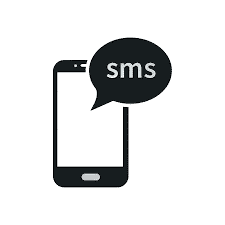Definition of Short Message Service (SMS) in the Network Encyclopedia.
What is Short Message Service (SMS)?
Short Message Service, best known as SMS, is a service for sending short text messages using the Global System for Mobile Communications (GSM) cellular telephone system. Short Message Service (SMS) can send short messages of up to 160 alphanumeric characters.

How SMS Works
SMS works as a store-and-forward service in which messages that are sent are stored at an SMS messaging center until the recipient can connect and receive them. SMS offers an advantage over paging systems in that it notifies the sender when the recipient has received the message. SMS allows messages to be sent or received simultaneously with voice, fax, or data transmission over GSM systems because it uses a separate signaling path instead of a dedicated channel. SMS thus works reliably even during peak usage periods of cellular systems.
Some SMS systems support compression to increase the amount of information that can be included in a message. You can also concatenate messages to create one message from several message fragments.
To use SMS, the user needs a subscription to a GSM bearer that supports SMS and a cell phone that supports SMS. The SMS function must be enabled for that user. (A subscription charge usually covers this.) SMS services are most widely deployed in Europe; more than 1 billion messages per month were sent in 1999.
How did the Short Message Service start?
Adding text messaging functionality to mobile devices began in the early 1980s. The first action plan of the CEPT Group GSM was approved in December 1982, requesting that «The services and facilities offered in the public switched telephone networks and public data networks … should be available in the mobile system». This plan included the exchange of text messages either directly between mobile stations or transmitted via message handling systems in use at that time.
The SMS concept was developed in the Franco-German GSM cooperation in 1984 by Friedhelm Hillebrand and Bernard Ghillebaert. The GSM is optimized for telephony since this was identified as its main application. The key idea for SMS was to use this telephone-optimized system, and to transport messages on the signaling paths needed to control the telephone traffic during periods when no signaling traffic existed. In this way, unused resources in the system could be used to transport messages at a minimal cost. However, it was necessary to limit the length of the messages to 128 bytes (later improved to 160 seven-bit characters) so that the messages could fit into the existing signaling formats. Based on his personal observations and on analysis of the typical lengths of postcard and Telex messages, Hillebrand argued that 160 characters was sufficient to express most messages succinctly.